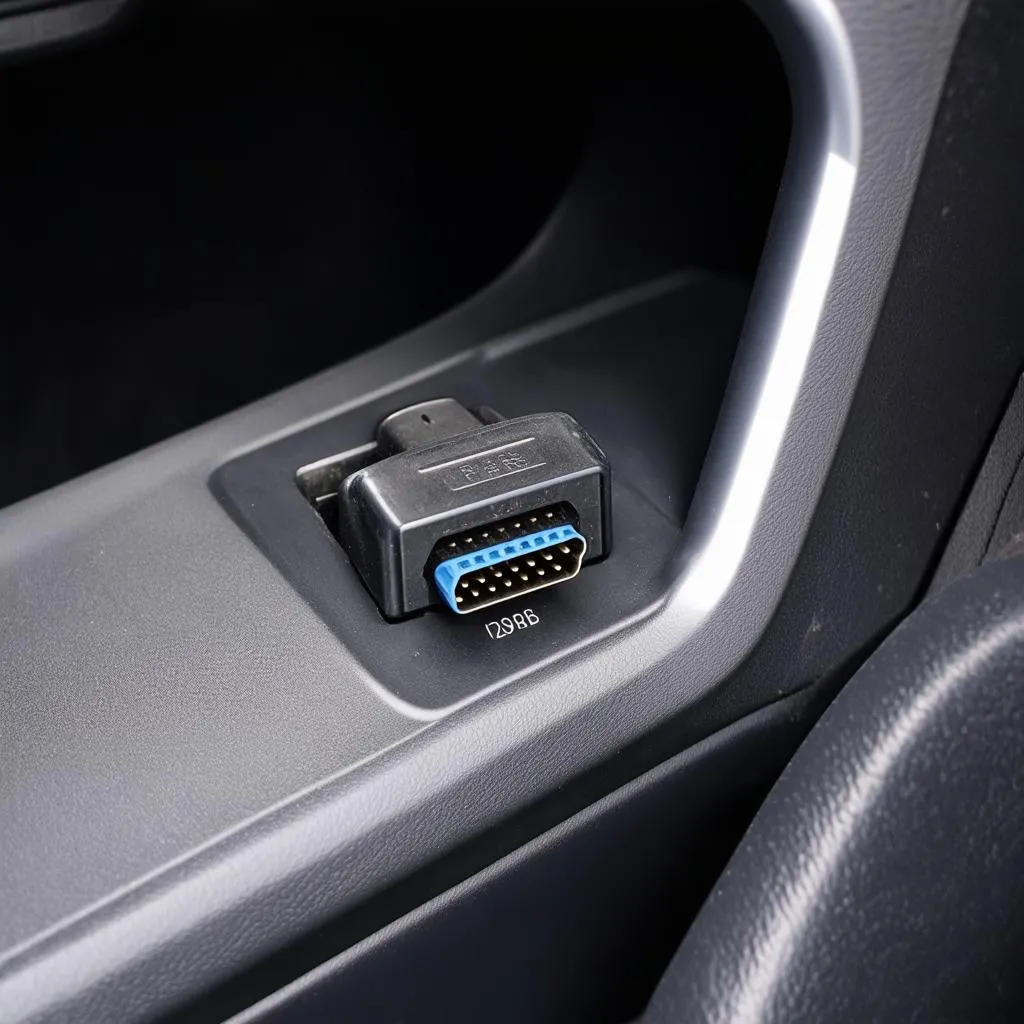Have you ever wondered what that mysterious port under your dashboard is? It’s not a USB port for your phone, nor is it a place to plug in your auxiliary cord. This, my friend, is the OBD port, short for On-Board Diagnostics. This small but mighty connector holds the key to understanding your car’s health, and in this guide, we’ll unravel its secrets.
The OBD Port: A Gateway to Your Car’s Health
Imagine this: you’re driving down the road, humming along to your favorite tunes, when suddenly your engine starts sputtering. A wave of anxiety washes over you, “Is it serious? What’s wrong with my car?” This is where the OBD port comes in.
The OBD port is a standardized connector found in most vehicles manufactured after 1996. It acts as a communication bridge between your car’s onboard computer and diagnostic tools, allowing you to gather valuable information about your car’s health. Think of it as a window into your car’s inner workings, revealing vital information that can help you diagnose and potentially fix problems before they escalate.
What Does An Obd Port Look Like?
The OBD port is typically located under the dashboard, on the driver’s side of the vehicle. It’s usually near the steering column, close to the fuse box or the cigarette lighter. Here’s a visual representation:
 Obd port location
Obd port location
Let’s break it down:
- Shape: The OBD port is a standard 16-pin connector, resembling a rectangular shape with two rows of pins.
- Color: Most OBD ports are either black or gray, but some vehicles might have different colored ports.
- Placement: As mentioned earlier, the OBD port is typically found under the dashboard on the driver’s side.
Common Questions About OBD Ports:
- “Why do I need an OBD port?” – The OBD port is crucial for diagnosing and troubleshooting problems with your vehicle. It allows you to access real-time information about your car’s engine, transmission, and other systems.
- “What if my car doesn’t have an OBD port?” – If your car is manufactured before 1996, it might not have an OBD port. However, older cars might have a different type of diagnostic connector.
- “Can I use an OBD port to improve my car’s performance?” – While some people use OBD devices to adjust their car’s performance, it’s important to use reputable tools and proceed with caution. Remember, modifying your vehicle’s software can potentially void your warranty and affect its safety.
Reading Your Car’s Language: OBD Scanners
Now that you know what an OBD port is and where to find it, the next question is: how do you access the information it holds? This is where an OBD scanner comes in. An OBD scanner, also known as a code reader, is a device that plugs into the OBD port and allows you to read diagnostic codes stored in your car’s computer.
OBD scanners come in various types:
- Basic Scanners: These scanners are relatively inexpensive and can read diagnostic codes, but they lack advanced features like live data streaming or data logging.
- Advanced Scanners: These scanners offer a wider range of functionalities, including live data streaming, data logging, and even the ability to clear diagnostic codes.
- Smartphone Apps: Many smartphone apps can connect to your car’s OBD port and provide basic diagnostics information.
Choosing the Right Scanner:
The choice of scanner depends on your needs and budget. If you’re looking for a simple way to diagnose basic problems, a basic scanner will suffice. If you’re a car enthusiast or a mechanic, an advanced scanner with more features might be a better choice.
OBD Scanners and Feng Shui:
While the concept of Feng Shui is generally associated with the placement of objects in your home or office, some might argue that a properly functioning car is essential for maintaining a harmonious flow of energy in your life. In this sense, using an OBD scanner to diagnose and potentially fix issues with your car could be seen as a way to improve the “chi” or vital energy flow related to your vehicle.
Here are some other articles on techcarusa.com that you might find helpful:
For any questions or technical assistance with OBD scanners or car diagnostics, feel free to reach out to our team via Whatsapp: +84767531508. We have a team of expert technicians ready to assist you 24/7.
Conclusion
The OBD port is an essential gateway to your car’s health. By understanding what it is, where to find it, and how to use an OBD scanner, you can gain valuable insights into your vehicle’s performance. Remember, keeping your car in good working order not only ensures a smooth and safe driving experience but can also contribute to a sense of harmony and wellbeing in your life.
Now that you’re equipped with this knowledge, you can confidently approach that mysterious port under your dashboard. And who knows, you might even discover hidden secrets your car has been keeping from you!
Please share your thoughts and experiences with OBD ports in the comments below!